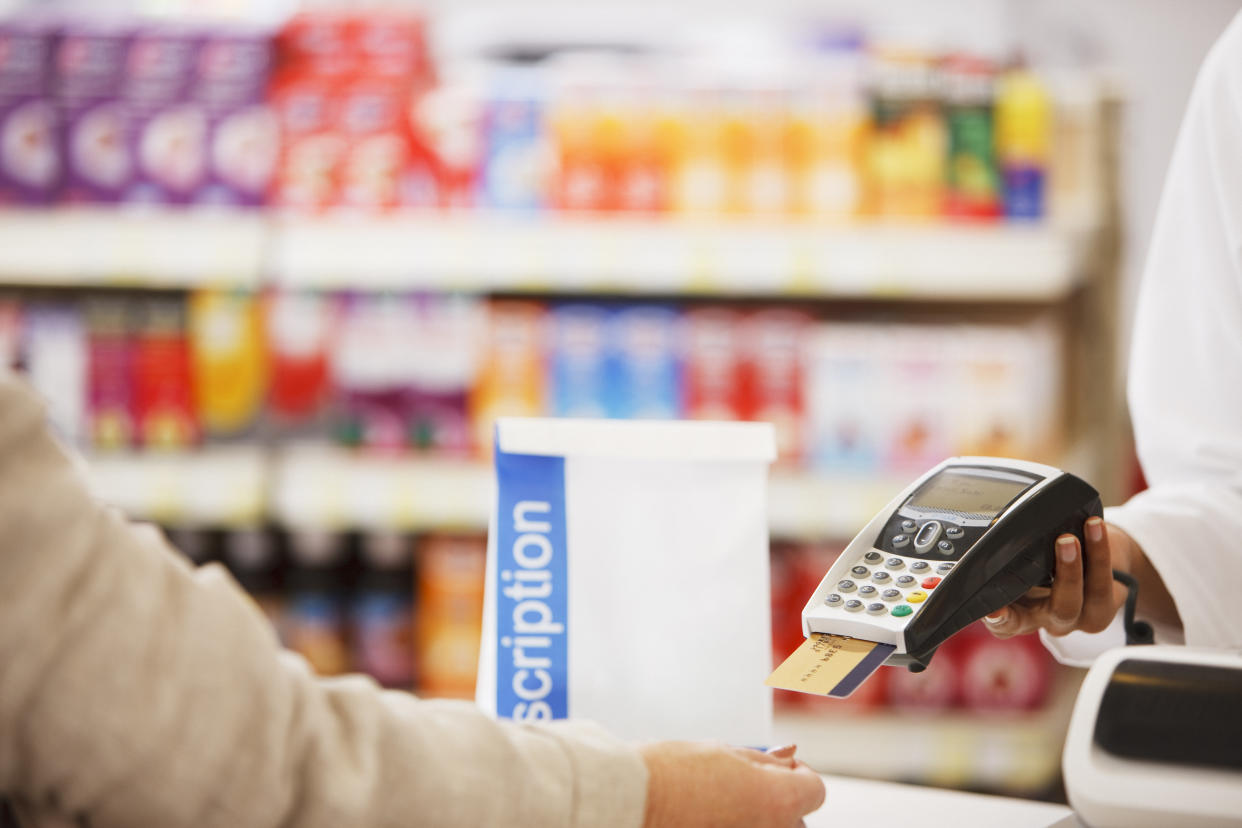6 Ways To Save Money On Prescription Drugs

With all the hoopla surrounding the high cost of prescription drugs, consumers sometimes feel powerless. But they needn’t be. Here are some ways you can be certain you are getting your prescriptions filled as inexpensively as possible:
1. Ask your doctor for samples.
Nothing beats free. Pharmaceutical reps leave drug samples for your doctor to dispense. It’s a great way to try a new medicine before you commit to buying it. If the doctor is writing a prescription, ask if he or she has some samples you could try first.
2. Ask your doctor for discount coupons.
Drug manufacturers frequently give doctors a pad of discount coupons to dispense along with prescriptions. But many doctors ignore or just forget about the coupons. There is no reason you should. Ask!
3. Check the drug companies for discounts.
Most drug companies have what are called patient assistance programs for their medications. In some cases, these programs are need-based, but not always. Sometimes you just need to know to ask. You can check what’s available here based on drug name. Or, see if the drug manufacturer’s website has details.
Copayment coupons are another option that has become increasingly common. In 2009, there were fewer than 100 brand name drugs with coupon programs, increasing to more than 700 by 2015, according to a study by Karen Van Nuys, research professor at the Schaeffer Center for Health Policy and Economics at the University of Southern California. These will be available from the drug company, so check its website.
4. Comparison shop.
A team of USC researchers did precisely that for a study published last July. Among the findings: Drug prices were lowest at independent pharmacies and when using online coupons. Medications were less expensive when purchased in lower-income areas. And cash prices ― by which we mean the price you pay when insurance benefits are not applied ― vary widely, even within a neighborhood.
So before you fill a prescription, call around for the best cash price. Or if you shop online, you can compare prices at Target and Costco. And don’t forget about GoodRx, a site that shows you what drug prices are at multiple locations.
5. Stop paying clawbacks.
Prescription overpayments happen so frequently that they even have a special name: clawbacks.
A clawback is when a patient’s insurance copayment is more than the actual cost of the drug to their insurer. It works like this: The pharmacist says you owe a $10 copay. You wrongfully assume that means the drug must cost more than $10, and your insurance company is sharing the cost with you and picking up the balance. In reality, the local pharmacy collects your $10 copay and sends it to your insurer’s pharmacy benefit manager. Then, the local pharmacy gets paid the actual cost of the drug, which is less than $10.
Had you paid for the drug out of pocket, you could have gotten a better deal.
“Don’t assume your insurance is saving you money,” Van Nuys told HuffPost.
Van Nuys and her colleagues found that customers overpaid for their prescriptions 23 percent of the time, with an average overpayment of $7.69 on those transactions.
Clawbacks are illegal in Texas, and Louisiana and Arkansas have taken steps to help prevent pharmacies from overcharging patients. Louisiana requires pharmacists to tell patients about all their options — including less expensive alternatives ― and Arkansas bars pharmacies from collecting more from customers than the pharmacy will ultimately be paid.
How can you avoid paying a clawback? Always ask your local pharmacist what the cash price would be if you didn’t use your insurance benefits.
6. Check around for other programs that can help.
The Partnership for Prescription Assistance helps low-income, uninsured and underinsured patients get free or nearly free medicines. They also assist with testing strips and meters for diabetes monitoring, and can even help people get service animals.
Some commonly prescribed medications can also be found for free or very low-cost (such as $4 for a 30-day supply) at supermarket chains and chain pharmacies, including Walmart. Some stores have membership programs with minimal annual fees you must pay to qualify for the free or low-cost drugs. Check out Shoprite, which provides free diabetes drugs, among other medications, at stores located in six Northeastern states. Publix, which operates in the Southeast, has a free prescription drug program for certain antibiotics, high blood pressure meds and diabetes, too. And check out Meijer’s pharmacy chain, which also has free prescription offerings including prenatal vitamins.
Related...
10 Little-Known Tips For Saving Money On Health Care
5 Ways To Stop Blowing So Much Of Your Budget On Food
10 Times You Should Haggle For A Better Price -- And How To Do It
Love HuffPost? Become a founding member of HuffPost Plus today.
This article originally appeared on HuffPost.

